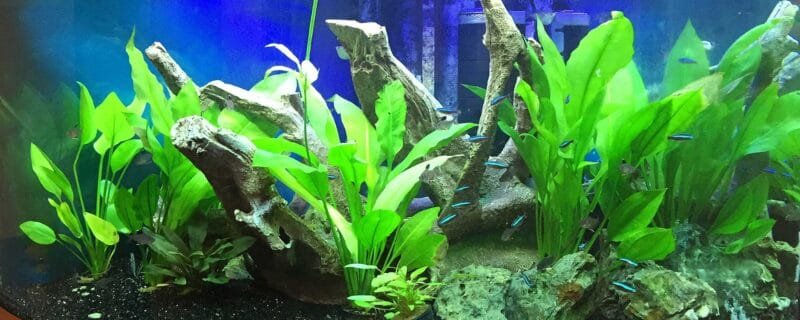Decoding Aquarium Water Chemistry: A Beginner’s Guide
Introduction
If you’re new to the captivating world of fishkeeping, you’ve probably realized that understanding aquarium water chemistry is like learning a new language. But fear not, because in this blog post, we’re going to unravel the basics of aquarium water chemistry. We’ll explore why it’s crucial, what you need to consider, the equipment required, and the fascinating biological cycle. Plus, we’ll uncover how each parameter affects the other, so you can create a thriving aquatic environment. Let’s dive in!
Why Is Aquarium Water Chemistry Important?
You might be wondering why you need to dive into the nitty-gritty of water chemistry. Well, here’s why it’s crucial:
- Fish Health: Proper water chemistry is essential for the health and well-being of your fish. Incorrect parameters can stress or harm them.
- Biological Balance: The water chemistry affects the biological processes in your aquarium, including the nitrogen cycle, which is vital for maintaining water quality.
- Plant Growth: If you have live plants, their growth and health are influenced by water chemistry, particularly factors like pH and nutrient levels.
Factors to Consider in Aquarium Water Chemistry
- pH Level: pH measures the acidity or alkalinity of your water. Different fish species prefer different pH levels, so choose fish that are compatible with your water’s natural pH or be prepared to adjust it.
- Ammonia, Nitrite, and Nitrate: These are the three key parameters in the nitrogen cycle. Ammonia and nitrite are toxic to fish, while nitrate is less harmful. Maintaining low ammonia and nitrite levels is crucial.
- Temperature: The right temperature is essential for your fish’s metabolism. Most freshwater aquarium fish thrive at temperatures between 75°F and 80°F (24°C to 27°C).
- Hardness: Water hardness is determined by the concentration of minerals like calcium and magnesium. It affects the health of your fish and the stability of pH levels.
Essential Equipment for Monitoring Water Chemistry
- Water Test Kits: Invest in test kits to measure pH, ammonia, nitrite, nitrate, and other parameters. These are essential for routine monitoring.
- Thermometer: A thermometer helps you keep track of your aquarium’s temperature. It’s a simple but vital tool.
- pH Adjusting Products: If you need to modify pH levels, pH adjusting products are available to make changes safely.
The Biological Cycle
The biological cycle is the heartbeat of your aquarium. It’s a natural process that helps maintain water quality. Here’s how it works:
- Ammonia: Fish waste and leftover food produce ammonia. At high levels, ammonia is toxic to fish.
- Nitrite: Beneficial bacteria called Nitrosomonas convert ammonia into nitrite, which is also harmful to fish.
- Nitrate: Another group of bacteria, Nitrobacter, transform nitrite into nitrate, which is less toxic. Nitrate can be removed through regular water changes.
How Each Parameter Affects the Other
The parameters in your aquarium are interconnected:
- pH and Hardness: pH is often influenced by water hardness. Some fish prefer softer water with a lower pH, while others thrive in harder, more alkaline water.
- Ammonia and Nitrite: As ammonia levels rise, they stress fish and can lead to health issues. This can also increase the nitrite levels, making matters worse.
- Temperature and Metabolism: Temperature affects your fish’s metabolic rate. It influences how fast your fish digest food and grow.
Conclusion
In conclusion, understanding the basics of aquarium water chemistry is essential for the health of your fish, the success of your plants, and the overall balance of your aquarium. By regularly monitoring water parameters, maintaining the nitrogen cycle, and ensuring the right conditions for your fish and plants, you’ll create a thriving aquatic ecosystem. Happy fishkeeping! 🌊🐟🔬



